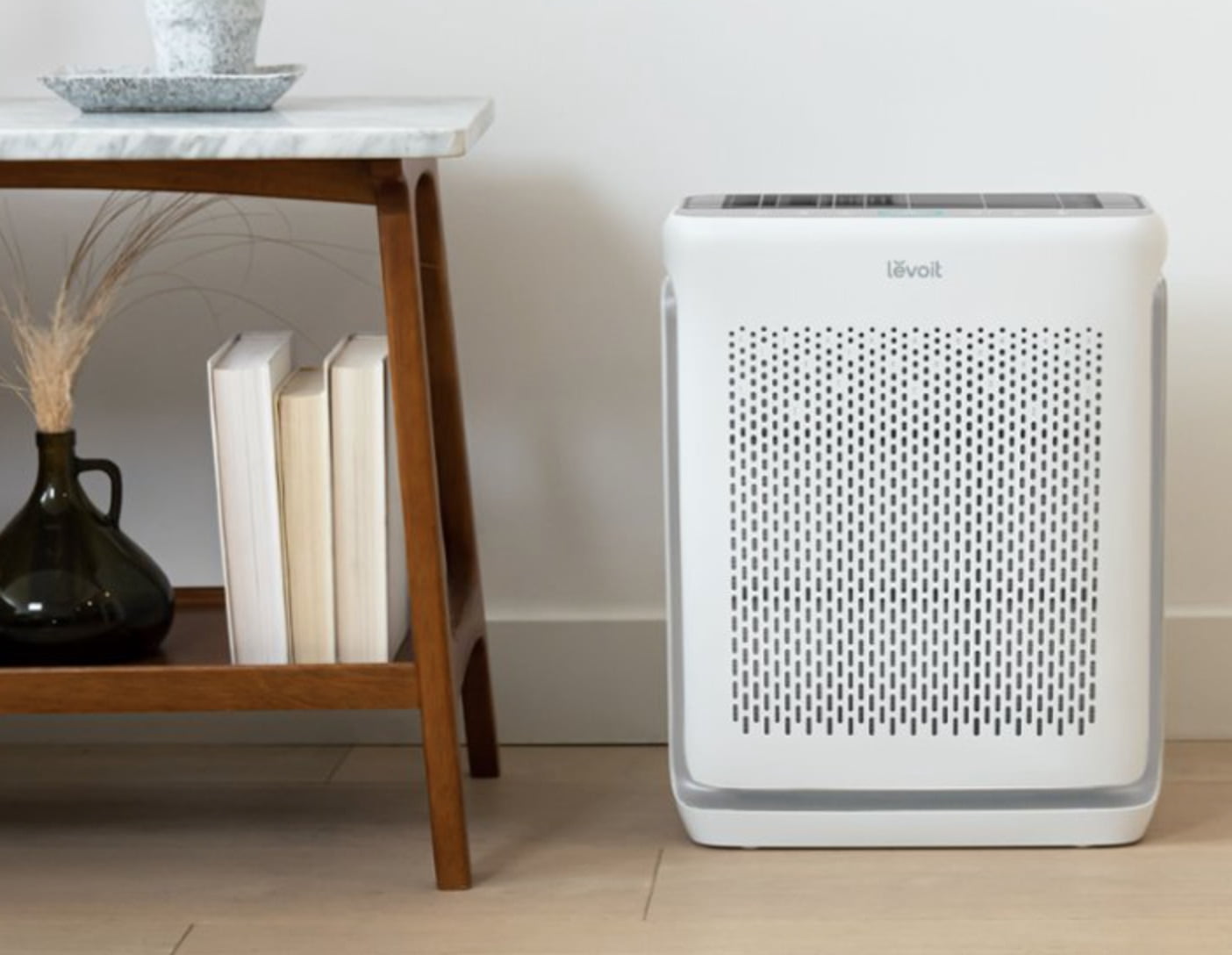Air purifiers, designed to improve indoor air quality, employ various mechanisms to eliminate pollutants from the air. One of the most common types is the HEPA air purifier. These machines use High Efficiency Particulate Air (HEPA) filters to capture microscopic particles like dust, pollen, pet dander, and mold spores. The HEPA filter consists of dense fibers that create a maze-like pathway for air to pass through, trapping airborne contaminants and preventing them from recirculating into the environment.
Another type of air purifier is the PlasmaWave air purifier. These devices use a combination of ionization and plasma technology to remove pollutants from the air. The PlasmaWave system works by generating positive and negative ions, which react with water vapor molecules in the air, forming hydroxyl radicals. These radicals effectively neutralize and eliminate harmful substances such as bacteria, viruses, chemical vapors, and odors, providing a cleaner and healthier air environment.
How do HEPA air purifiers work?
HEPA air purifiers are designed to remove small particles and allergens from the air. They use a highly efficient filter made of fine mesh that traps tiny particles as they pass through. This filter is made up of layers of fibers that create a maze-like structure, allowing larger particles and allergens to get trapped while allowing clean air to pass through. The key to the effectiveness of HEPA filters is their ability to capture particles as small as 0.3 microns, which include dust mites, pet dander, pollen, and mold spores.
By incorporating a combination of mechanical and electrostatic techniques, HEPA filters achieve a high level of air purification. The fibers in the filter create a physical barrier that catches larger particles, while charged fibers attract and capture smaller particles through electrostatic attraction. This dual-action mechanism ensures that a wide range of airborne pollutants is efficiently trapped and removed from the air. HEPA air purifiers are widely recognized for their effectiveness in improving indoor air quality, making them a popular choice for individuals with allergies, asthma, or other respiratory conditions.
How do PlasmaWave air purifiers work?
PlasmaWave air purifiers utilize an innovative technology to effectively clean the air in indoor spaces. The process starts with the intake of polluted air into the purifier. Within the purifier, positively and negatively charged ions are produced by an electrical discharge. These ions are then combined with water vapor in order to form hydroxyl radicals, which are highly reactive and able to neutralize harmful pollutants such as bacteria, viruses, and volatile organic compounds (VOCs). As a result, the air is purified and the contaminants are eliminated. This unique process ensures that the air in your home or office is cleaner and healthier to breathe.
Moreover, PlasmaWave technology enables air purifiers to provide comprehensive air cleaning without producing harmful ozone. While some air purifiers may generate high levels of ozone, which can be detrimental to your health, PlasmaWave technology does not produce ozone as a byproduct. This makes PlasmaWave air purifiers a safe and reliable option for improving indoor air quality. By using a combination of ionization and hydroxyl radical formation, PlasmaWave air purifiers effectively remove pollutants while minimizing any potential negative side effects. With their superior performance and ozone-free operation, PlasmaWave air purifiers are an excellent choice for those seeking a healthier indoor environment.
How do ozone air purifiers work?
Ozone air purifiers, also known as ozone generators, work by producing ozone gas. These devices use a high-voltage electrical charge to convert oxygen molecules (O2) into ozone molecules (O3). The ozone molecules are then released into the air, where they interact with pollutants, bacteria, and odors.
When ozone molecules come into contact with pollutants, they undergo a chemical reaction that helps to neutralize or eliminate them. This reaction occurs when the ozone molecule oxidizes the particles it comes into contact with, breaking them down into smaller, less harmful substances. As a result, ozone air purifiers are often marketed as effective at eliminating strong odors, such as those caused by smoke or pet urine, as well as reducing the presence of airborne bacteria and viruses.
However, it’s important to note that ozone air purifiers can have potential drawbacks and risks. Ozone is a highly reactive gas and can be harmful to humans and animals when inhaled in high concentrations. Exposure to ozone can cause respiratory issues, throat irritation, and lung inflammation. Additionally, ozone can react with other chemicals in the environment to produce harmful byproducts, such as formaldehyde. Therefore, it’s crucial to use ozone air purifiers with caution, ensuring they are used in well-ventilated areas and following manufacturer guidelines for safe operation. Ozone air purifiers work by producing ozone gas through a high-voltage electrical charge.
- The ozone molecules released into the air interact with pollutants, bacteria, and odors.
- When ozone molecules come into contact with pollutants, they undergo a chemical reaction that neutralizes or eliminates them.
- This reaction occurs when the ozone molecule oxidizes the particles it comes into contact with, breaking them down into smaller substances.
- Ozone air purifiers are marketed as effective at eliminating strong odors like smoke or pet urine and reducing airborne bacteria and viruses.
- However, ozone can be harmful to humans and animals when inhaled in high concentrations.
- Exposure to ozone can cause respiratory issues, throat irritation, and lung inflammation.
- Ozone can also react with other chemicals in the environment to produce harmful byproducts like formaldehyde.
- It is important to use ozone air purifiers with caution in well-ventilated areas and follow manufacturer guidelines for safe operation.
How do ionizer air purifiers work?
Ionizer air purifiers work by emitting negatively charged ions into the air. These ions attach themselves to positively charged particles, such as dust, pollen, and pet dander, creating an electrostatic attraction. Once the particles are charged, they are attracted to surfaces like walls, floors, or furniture and become easier to remove through regular cleaning.
The process of ionization helps to remove pollutants from the air by causing them to clump together and become heavier. This can effectively reduce the number of airborne particles and improve indoor air quality. However, it is important to note that ionizer air purifiers do not actually eliminate or destroy pollutants like harmful gases or bacteria. They simply change the electrical charge of the particles, making them easier to remove through cleaning or by settling them onto surfaces.
How do air purifiers work?
Air purifiers work by removing pollutants and contaminants from the air, improving indoor air quality.
How do HEPA air purifiers work?
HEPA air purifiers use a high-efficiency particulate air (HEPA) filter to capture and trap tiny particles like dust, pollen, pet dander, and mold spores.
How do PlasmaWave air purifiers work?
PlasmaWave air purifiers use an ionization process to generate positive and negative ions, which then combine with water vapor in the air to create hydroxyl radicals. These radicals neutralize and break down pollutants and odors.
How do ozone air purifiers work?
Ozone air purifiers produce ozone, a highly reactive gas, which reacts with and eliminates airborne pollutants. However, ozone can be harmful to humans and pets if present in high concentrations.
How do ionizer air purifiers work?
Ionizer air purifiers release negative ions into the air, which attach to positively charged particles like dust, smoke, and allergens. This causes the particles to become heavy and fall to the ground, effectively removing them from the air.
Are ionizer air purifiers safe to use?
While ionizer air purifiers can effectively remove pollutants from the air, they may produce ozone as a byproduct, which can be harmful in high concentrations. It is important to choose ionizers with low ozone emission and follow the manufacturer’s guidelines for safe use.
Do ionizer air purifiers remove odors?
Yes, ionizer air purifiers can help eliminate odors by neutralizing odorous particles and breaking them down. However, it is important to note that not all ionizers are equally effective at odor removal.
How often should I clean or replace the filters in an ionizer air purifier?
The frequency of cleaning or replacing the filters in an ionizer air purifier depends on factors like the manufacturer’s recommendations, usage, and the level of pollutants in your environment. It is generally recommended to clean or replace the filters every 3 to 6 months.
Can ionizer air purifiers help with allergies?
Yes, ionizer air purifiers can be helpful for allergy sufferers as they can effectively remove allergens like dust, pollen, and pet dander from the air. However, it is important to choose an ionizer with a HEPA filter or combine it with a separate HEPA filter for optimal allergy relief.

